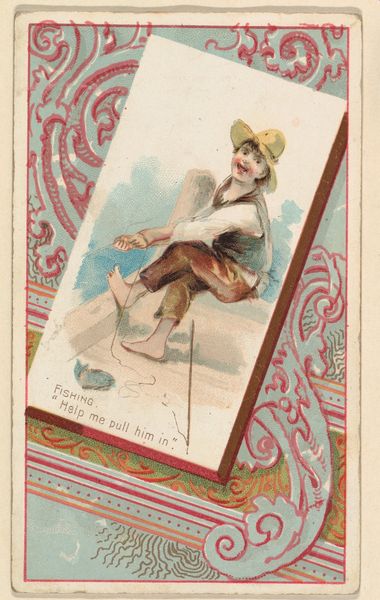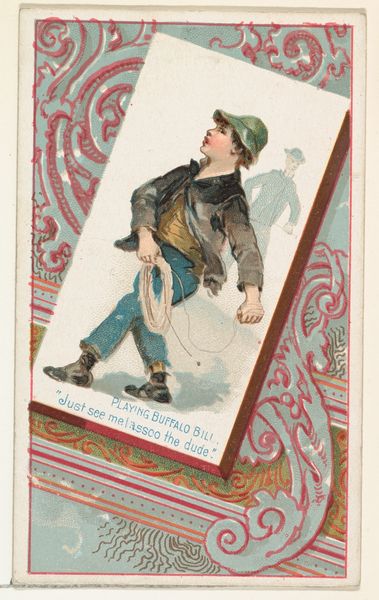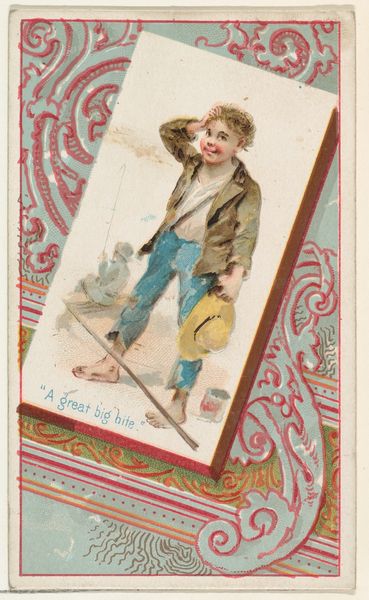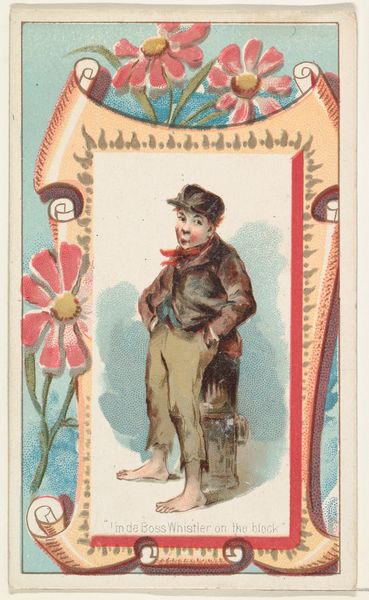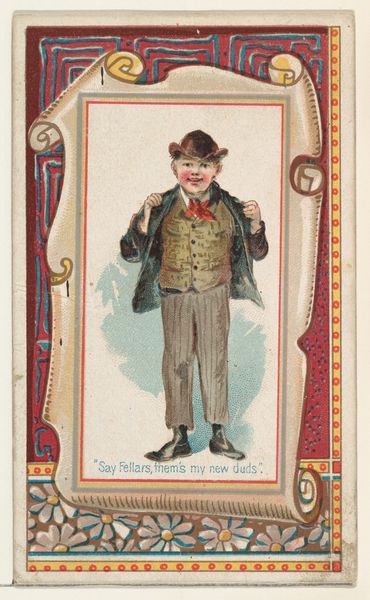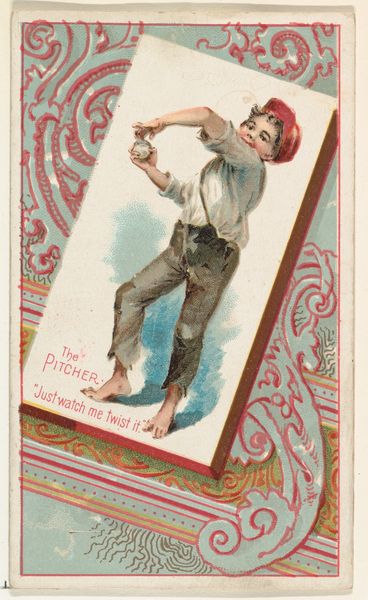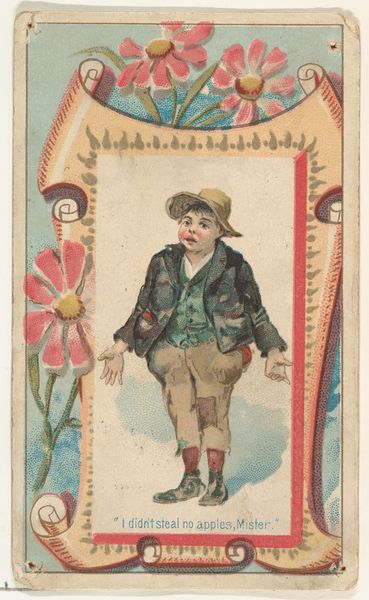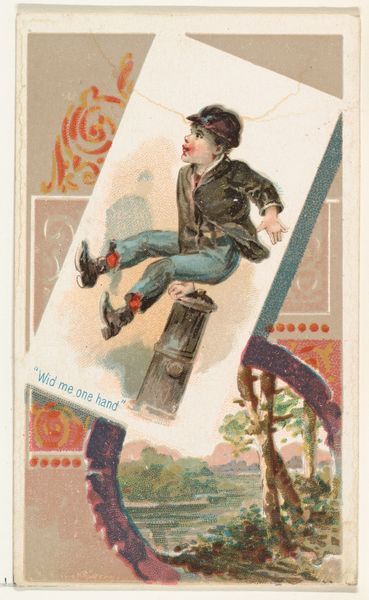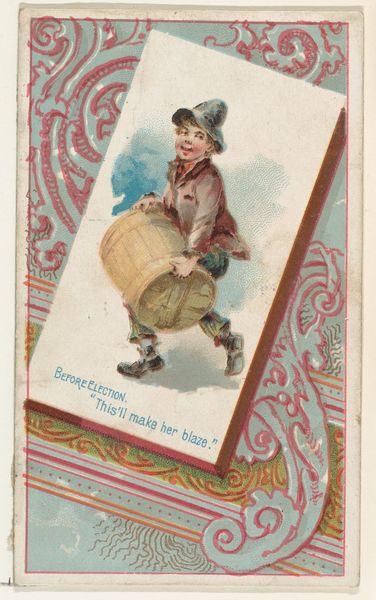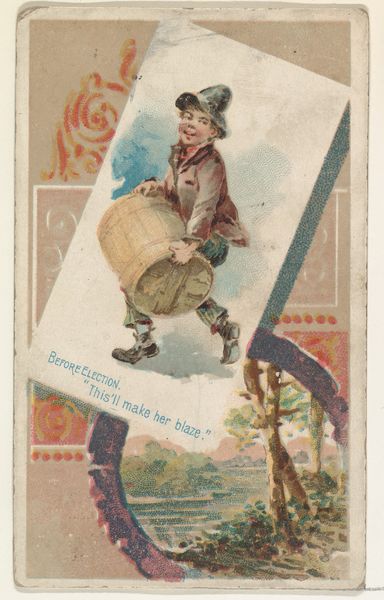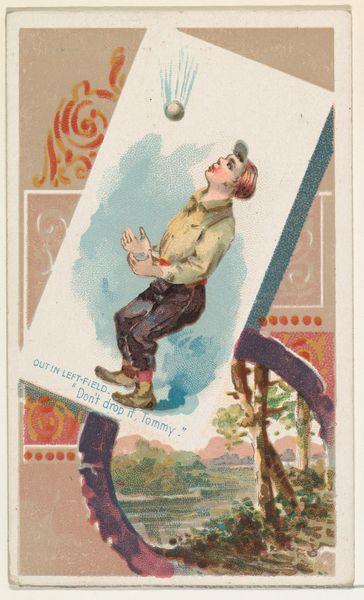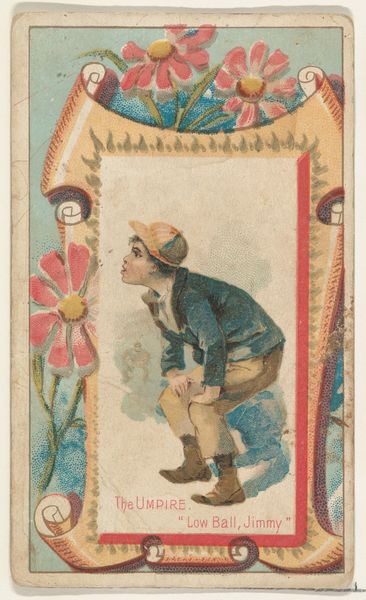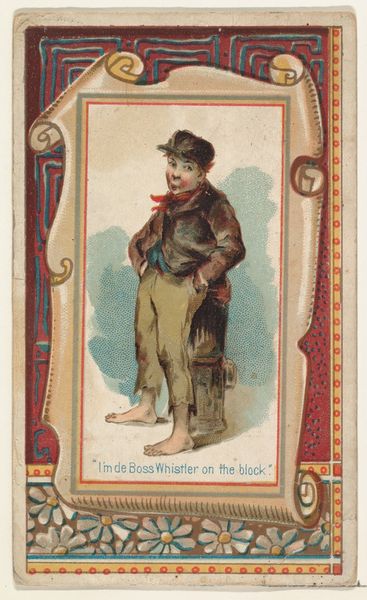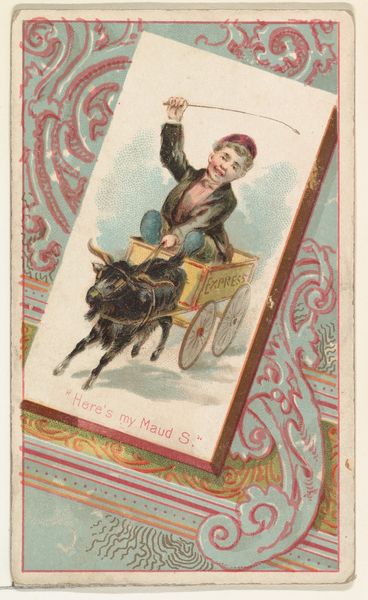
The Umpire, "Low Ball, Jimmy," from the Terrors of America set (N136) issued by Duke Sons & Co. to promote Honest Long Cut Tobacco 1888 - 1889
0:00
0:00
drawing, coloured-pencil, print
#
portrait
#
drawing
#
coloured-pencil
#
water colours
#
pottery
# print
#
impressionism
#
coloured pencil
#
men
#
genre-painting
Dimensions: Sheet: 2 3/4 x 1 1/2 in. (7 x 3.8 cm)
Copyright: Public Domain
Editor: This is "The Umpire, 'Low Ball, Jimmy'," a coloured-pencil print from 1888-1889, created by W. Duke, Sons & Co. It's…quaint. Almost feels mass-produced. What can you tell me about it? Curator: Its origins as a trade card issued by a tobacco company, W. Duke, Sons & Co., speaks volumes. The "Terrors of America" set aimed to promote "Honest Long Cut Tobacco" – art directly serving commercial interests, blurring the lines between advertising, collecting, and, dare I say, artistic expression. Editor: So, it’s really about the commodification of culture? Curator: Precisely! The material itself, a mass-produced print rather than a unique painting, highlights how art was becoming increasingly accessible and intertwined with everyday consumption. Think about the labor involved: from the artist who created the image to the factory workers printing countless copies, to the distributors inserting these into tobacco packages. Where do we locate "art" in this process? Editor: That's a great point. We tend to think of art as existing on its own terms. But what was it actually printed on, and what sort of inks did they use? Curator: That's exactly the sort of question we must ask. Examining the paper, the pigments, and the printing techniques employed would unlock further insights into the economics of production and distribution at the time. It reframes our understanding of "artistic value". It ceases to be about a singular artist's genius but focuses on industrial manufacture of objects. Editor: I never really thought of it that way. Curator: This lens reveals how economic forces shaped the creation and dissemination of imagery, prompting reflection upon materiality and consumerism. Editor: Okay. It gives me a lot to reflect on – thanks!
Comments
No comments
Be the first to comment and join the conversation on the ultimate creative platform.
